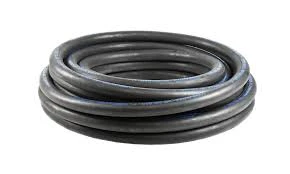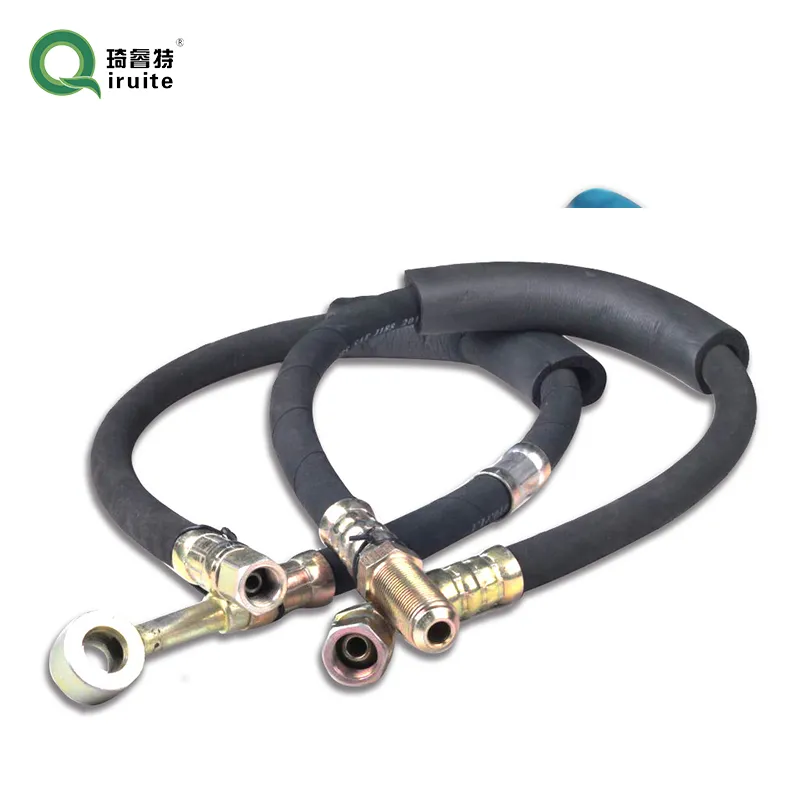High-Quality Air Hose Pipe Connector – Durable & Versatile Air Pipe Connector Types for All Applications
- Introduction to Air Hose Pipe Connectors
- Types and Technical Advantages of Air Pipe Connectors
- Comparative Analysis of Leading Manufacturers
- Customization Solutions in Air Pipe Connector Industry
- Data-Driven Application Cases
- Future Trends and Innovations in Air Pipe Connections
- Conclusion: The Value of Choosing the Right Air Hose Pipe Connector

(air hose pipe connector)
Introduction to Air Hose Pipe Connectors: Function & Market Relevance
Air hose pipe connectors serve as essential components in pneumatic systems, connecting hoses to various machinery and outlets for safe and efficient air transfer. Their role extends across industrial manufacturing, automotive repair, agriculture, and advanced automation lines. Global research indicates that the market for air pipe connectors exceeded $1.1 billion in 2023 and is expected to grow at a CAGR of 5.3% through 2030. The reliability of these connectors directly influences system uptime, energy efficiency, and workplace safety. In this article, explore core connector types, technical features, market data, application scenarios, and advanced customization options.
Types and Technical Advantages of Air Pipe Connectors
A comprehensive understanding of air pipe connector types is crucial for selecting the right product. Common categories include quick-connect, push-to-connect, compression fittings, barbed fittings, and threaded connectors.
- Quick-connect: Ideal for rapid tool changes; offers leak-proof security with a simple push-release mechanism.
- Push-to-connect: Streamlines assembly; requires no special tools, reducing labor expenses by up to 50%.
- Compression fittings: Used for high-pressure environments; ensures a robust, tight seal by compressing the connector over the pipe.
- Barbed fittings: Suitable for low-pressure jobs; utilize barbs for hose retention without clamps in smaller-diameter systems.
- Threaded connectors: Provide versatility; commonly used in modular or frequently reconfigured setups.
High-quality air hose pipe connector
s offer pressure ratings between 150 PSI and 300 PSI, with temperature tolerances ranging from -20°C to 80°C. Material choices, such as nickel-plated brass, stainless steel, and reinforced polymers, impact corrosion resistance, longevity, and system performance.
Comparative Analysis of Leading Manufacturers
Selecting an air pipe connector supplier is a strategic decision affecting operational efficiency, safety compliance, and ongoing maintenance costs. Below is a data-driven comparison of five industry-leading brands based on key criteria: pressure rating, material, connection time, warranty, and price per unit.
| Manufacturer | Pressure Rating (PSI) | Connection Time (seconds) | Material | Warranty (years) | Average Price (USD) |
|---|---|---|---|---|---|
| Parker Hannifin | 300 | 2.8 | Stainless Steel | 2 | 5.25 |
| Legris (Pneumatic Div. of Parker) | 250 | 3.2 | Nickel-Plated Brass | 1 | 3.90 |
| SMC Corporation | 290 | 2.1 | Reinforced Polymer | 3 | 4.70 |
| Festo | 280 | 3.0 | Stainless Steel | 2 | 5.80 |
| Eaton | 250 | 2.9 | Brass | 1 | 3.50 |
The data shows that SMC and Parker Hannifin deliver superior pressure ratings and quick connection times, optimal for demanding industrial settings. While initial costs may be higher for stainless steel models, the extended warranty and lower risk of downtime can offset these expenses throughout the connector's lifecycle.
Customization Solutions in the Air Pipe Connector Industry
Industry-specific requirements and evolving automation trends have driven the demand for customized air pipe connector solutions. Customization ensures optimal compatibility with legacy and proprietary equipment, caters to constraints like spatial limitations or chemical resistance, and can enhance fluid dynamics for specialized processes.
- Material Selection: End-users can specify high-corrosion resistance alloys or food-grade polymers for chemical, pharmaceutical, or food processing lines.
- Connection Mechanism: Hybrid connectors featuring both quick-release and threaded locking are available for systems that require periodic reconfiguration while maintaining leak-free security.
- Color Coding & Branding: Manufacturers now offer custom color options and laser-engraved logos to streamline maintenance and improve system traceability.
- Size and Shape: Fully bespoke connectors can be produced, matching unique thread standards or fitting ultra-compact setups.
According to a 2023 industry report, over 34% of high-throughput manufacturing facilities now use at least one customized air hose pipe connector assembly, underlining the shift from off-the-shelf to engineered solutions.
Data-Driven Application Cases
Real-world implementations underscore the impact of air pipe connector enhancements on operational metrics. Below are selected application studies from prominent sectors:
- Automotive Production: Flexible push-to-connect systems enabled a leading car manufacturer to cut assembly time by 18%, saving 1200 man-hours annually.
- Pharmaceutical Clean Rooms: Stainless steel quick-connect air hose pipe connectors reduced contamination risk and delivered over 99.98% connection integrity in sterility tests.
- Food Processing Lines: Custom-coded polymer connectors facilitated effortless system reconfiguration, shrinking changeover intervals from 105 to 53 minutes.
- Aerospace Component Assembly: Compression-style fittings ensured consistent 250 PSI operation and zero recorded leaks in a 24-month reliability study.
The data demonstrates that modern connector technologies can dramatically improve uptime, workplace safety, and throughput in critical sectors.
Future Trends and Innovations in Air Pipe Connections
As industries embrace digitization and Industry 4.0 concepts, air pipe connectors are evolving accordingly. From embedded sensors monitoring real-time pressure and leak analytics to magnetic locking systems for even faster tool changes, innovation is robust.
- Smart Connectors: Next-generation components feature IoT compatibility, enabling predictive maintenance and secure remote operations.
- Eco-Friendly Materials: Manufacturers are increasingly utilizing recyclable metals and bio-based polymers to minimize environmental impact.
- Miniaturization: Precision industries demand micro-connectors with the same performance metrics but at a 35% smaller footprint.
- Self-Healing Seals: Experimental polymers are entering the market, boasting the ability to reseal after minor damage, extending connector lifespan.
Research by Global Trends Analytics predicts the smart connector segment will account for 12% of all industrial air pipe connector sales by 2028, reflecting strong adoption among forward-thinking enterprises.
Conclusion: The Value of Choosing the Right Air Hose Pipe Connector
Selecting the optimal air hose pipe connector is fundamental for maximizing pneumatic system reliability and supporting critical industrial processes. By analyzing connector types, leveraging industry benchmarks, and embracing tailored solutions, organizations can achieve measurable gains in productivity, safety, and system longevity. As the sector shifts toward smart, eco-conscious, and application-specific connectors, the value proposition for investing in high-performance air pipe connectors will only amplify.

(air hose pipe connector)
FAQS on air hose pipe connector
Q: What is an air hose pipe connector?
A: An air hose pipe connector is a device used to securely join air hoses or pipes together. It ensures a leak-proof connection for compressed air transmission. Different types are available for various applications.Q: What are the common air pipe connector types?
A: Common air pipe connector types include quick connect, push-to-connect, barbed, and threaded connectors. Each type suits specific hose sizes and pressure requirements. Choose based on compatibility and application.Q: How do I choose the right air pipe connector?
A: Select based on hose diameter, pressure rating, and connector type needed (e.g., quick connect, threaded). Ensure compatibility with your air system. Consulting your equipment manual is advisable.Q: Can I use an air hose pipe connector for water or other fluids?
A: Air hose pipe connectors are designed for compressed air, not liquids. Using them with water or other fluids may cause leaks or damage. Always check manufacturer’s specifications before use.Q: How do I maintain air hose pipe connectors?
A: Regularly inspect for wear, damage, and leaks. Clean connectors and apply lubricant if recommended by the manufacturer. Replace faulty connectors immediately to ensure safety and efficiency.-
Ultimate Spiral Protection for Hoses & CablesNewsJun.26,2025
-
The Ultimate Quick-Connect Solutions for Every NeedNewsJun.26,2025
-
SAE J1401 Brake Hose: Reliable Choice for Safe BrakingNewsJun.26,2025
-
Reliable J2064 A/C Hoses for Real-World Cooling NeedsNewsJun.26,2025
-
Heavy-Duty Sewer Jetting Hoses Built to LastNewsJun.26,2025
-
Fix Power Steering Tube Leaks Fast – Durable & Affordable SolutionNewsJun.26,2025

